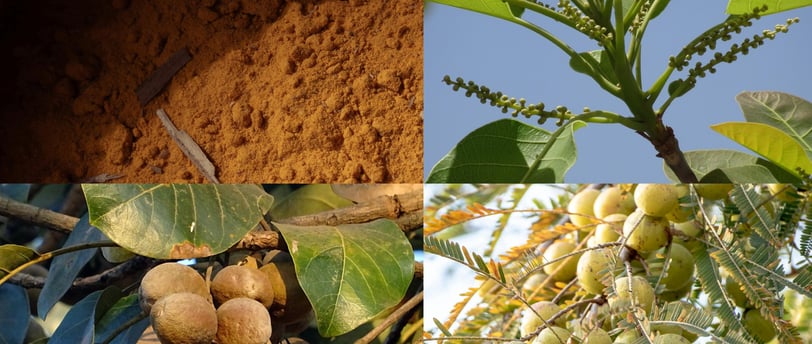Triphala and Meditation
There exist two categories of pathogenic factors: those associated with the body and those linked to the mind. Both physical and psychological ailments can be addressed effectively, given that three pathogenic factors maintain a state of equilibrium; however, the balance of these factors varies from individual to individual.


A healthy body is essential for effective meditation. The Charak Saṁhitā identifies three pathogenic factors, or doṣa-s, that govern the human body. It asserts that the soul is fundamentally free from any pathogenic influence that can lead to disease. These pathogenic factors can be categorized into two types: those affecting the body and those impacting the mind. Both physical and psychological ailments can be addressed when these three factors are balanced; however, the equilibrium of these factors varies among individuals. The three body-related pathogenic factors are vata (vāyu), pitta, and kapha. Any alterations in these factors can result in illness. The Charak Saṁhitā indicates that the physical body's pathogenic factors can be managed through appropriate therapies and medications. Additionally, it discusses the three mental pathogenic factors, known as the three guṇas (Lalitā Sahasranama 984 - triguṇa): sattva, rajas, and tamas. The mental pathogenic factors can be alleviated through spiritual practices, including meditation and the acquisition of spiritual knowledge (as found in the Upaniṣad-s, among other texts).
Thus, achieving a harmonious balance between body and mind is crucial. Two key elements facilitate this harmony: triphala powder for the body and meditation for the mind. This powder can be combined with pure honey and consumed twice daily—once in the morning after sunrise and again in the evening after sunset. Each serving should consist of two pinches, taken with the thumb and index fingers. It is recommended to consume it 40 minutes after meals. The suggested daily dosage ranges from 250 milligrams to 500 milligrams (combined for both servings). It is advisable to begin with a lower dosage of 250 mg and gradually increase to 500 mg over time. This regimen can be followed continuously for up to 45 days without interruption.
To prepare triphala, procure the following ingredients and allow them to dry in the shade, avoiding direct sunlight:
1. Haritaki (Terminalia chebula)
2. Amalaki (Emblica Officinalis)
3. Bibhitaki (Terminalia bellirica)
Grind the Bibhitaki finely and combine it in equal parts. Once ground, place the powder on a large plate and cover it completely with a white cloth, allowing it to dry in the morning sun for approximately one hour over the course of two to three days. This process is sometimes known as kāyakalpa (kāya – body; kalpa – treatment/rejuvenation). The powder is now prepared for use. It is advised that this should not be ingested during pregnancy.
